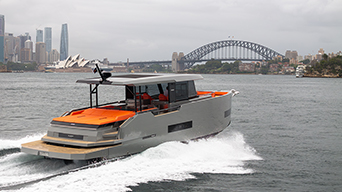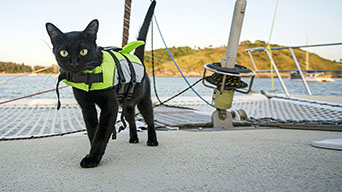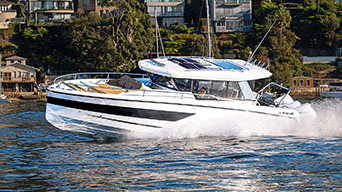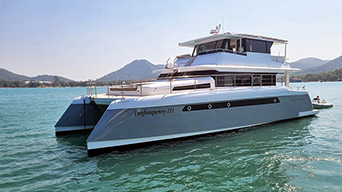The skipper indicated that all his machinery was working okay, but he had so much trouble with the vessel rolling and pitching that he and his five family members were violently seasick, and beginning to panic. The boat should have been handling the weather okay – we were in a similar-type vessel and making 15 knots comfortably.
We found them right in the centre of the 2000sq km bay. The boat was travelling slowly, pitching, rolling and heaving. We put a crew member onboard and – after checking the occupants, assessing the boat and determining where they were headed – the cruiser was quickly running smoothly through the following seas at 15 knots. With a reasonable amount of power and the bow trimmed up, it ran comfortably and quickly through the water.
Talking to the skipper at his marina, the problem became obvious: while he had a lot of experience in displacement cruisers, he was new to this type of boat. He was simply unaware of techniques used to handle large semi-displacement cruisers in choppy weather and was impressed with how his boat handled when trimmed and operated properly.
Despite the fact that his boat could handle the weather, he also failed to consider other open-water risks, such as seasickness, broken glasses, crockery and equipment strewn about the boat, and stresses on the boat and equipment.






.jpeg)








